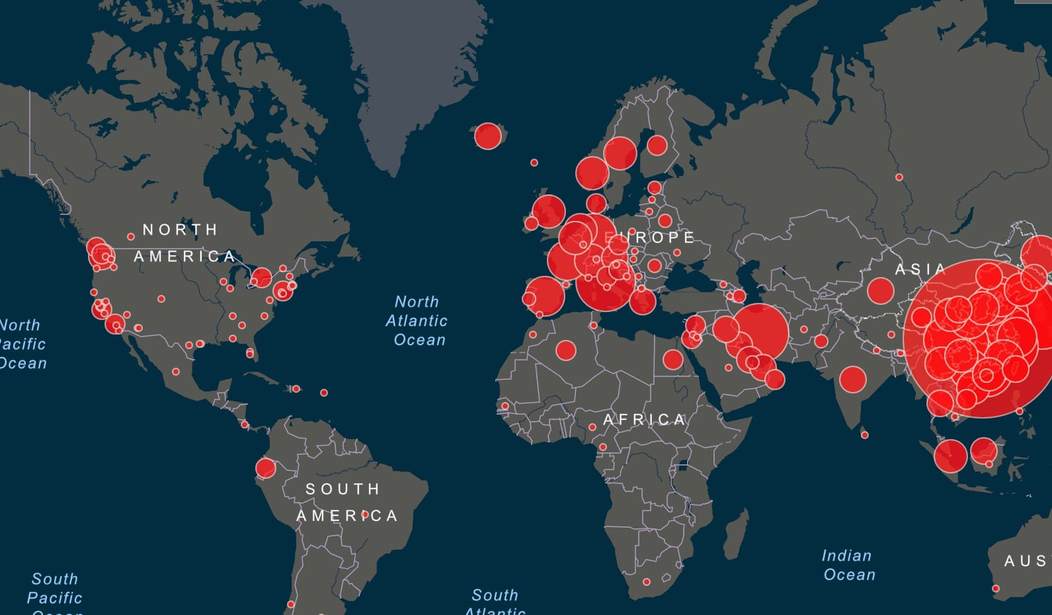Everyone is, of course, concerned with what the mortality rate for COVID-19 is. You could, in fact, call it a life-or-death concern, and it’s become a big news story again today (as with this USA Today story).
So, which is correct? The WHO value of 3.4 percent for COVID-19 mortality, or Trump’s “hunch”?
Honestly, both.
Warning, there will be math — or at least long division, which seems to overwhelm a lot of people in the press. And actually, worse, there will be probability and statistics, which puzzles almost everyone. And this is compounded by the fact that these things have crisp definitions that aren’t what people think, and worse, there are sometimes multiple definitions for what seems to be the same term.
So, like a good academic paper, let’s start with terminology.
The important issue to everyone, the life-or-death issue (and yes I’ll probably make that joke at least once more) is “if I get COVID-19, am I gonna die?”
Of course, for you the individual reader, all I can offer you is a suggestion you find a Tarot reader, but overall, we answer these questions statistically. The key statistic there is a measure of how many of the people who get the disease die from it—the mortality rate. If we want to be a little more precise, we are really interested in the case-fatality rate. This has two useful definitions.
(1) number of deaths/number of cases
(2) number of deaths / (number of deaths + number recovered)
The one people usually use is the simple deaths/cases one, definition (1). Definition (2) has some things to recommend it since it doesn’t include the number of people who are sick but have neither died nor gotten well yet. But definition (2) is hardly ever reported. There are also attempts to make better estimates using mathematical models of what happens over time, but again, that’s rarely reported.
COVID-19 makes all these numbers fuzzy because it’s a new bug and one we don’t actually understand really well yet. Still, we can go with the WHO statement that USA Today used, and frankly misunderstood. (As always, I’m using the estimable Johns Hopkins COVID-19 dashboard, and the underlying data.)
Globally, about 3.4% of reported COVID-19 cases have died,” he said. “By comparison, seasonal flu generally kills far fewer than 1% of those infected.
That’s actually both precise and quite specific: it’s case-fatality by definition one, and as of 2020-Mar-05 at 15:23 EST it’s “3347/97,873 = 0.034197378,” or 3.4 percent. So, indeed, the case-fatality rate right now is 3.4 percent or thereabouts.
Case-fatality has a real problem, however: a lot of people get COVID-19 and develop either no symptoms whatsoever, or develop the basic symptoms: fever and a cough. Some patients develop a sore throat, some patients develop shortness of breath.
And there’s the rub: a lot of people, in fact probably most people with the virus, will develop symptoms identical to the common cold. Quite a number of those patients will never be identified as COVID-19 patients. The actual scientific literature is often reporting mortality among patients who have come to the hospital with active pneumonia.
Now, here’s what Trump is reported to have said:
Asked about WHO’s coronavirus fatality rate findings during an interview Wednesday, Trump told Fox News host Sean Hannity: “Well, I think the 3.4% is really a false number.”
He added, “now, this is just my hunch … based on a lot of conversations with a lot of people that do this, because a lot of people will have this, and it’s very mild.”
Okay, it would be nice if Trump hadn’t phrased that as a “hunch,” but mainly because it handed the usual suspects a conclusion on which to jump. But he’s saying that having talked to a lot of experts, he believes the case-fatality rate will turn out to be much less than 3.4 percent.
How could that be true? The simplest explanation is that a lot of asymptomatic or only mildly symptomatic patients are not being identified at all. This problem then is obvious in the definition, because every unidentified case increases the denominator in the fraction, and that decreases the case-fatality rate.
We have a couple of examples that, if not quite perfect Petri dishes, are at least informative, well-controlled populations: the Diamond Princess cruise ship, and South Korea.
A cruise ship is honestly the perfect environment in which to spread a virus, as thousands of norovirus sufferers have discovered — and norovirus is spread in, um, bodily secretions, he said delicately. So you would expect a pretty significant proportion of the passengers and crew of the Diamond Princess to get sick, and they did, with 704 sick among 3711 passengers and crew. That’s about 19 percent — call it one in five. Of those, there were six deaths, yielding a case-fatality of about 0.008 – 0.8 percent.
Then there’s South Korea, where there are 6593 confirmed cases and 40 deaths (as of 6 March 2020 at 03:33 EST). The case-fatality rate there is about 0.006 — 0.6 percent.
Now, on one hand, these are sort of small samples, but on the other hand, they both have special characteristics that make them interesting. The Diamond Princess was about as well isolated and densely packed an exposed population as you could find. While I’m sure they tried to minimize exposures on the ship once they were aware of COVID-19, there’s only so much you can do. But because of that isolation, they were also able to identify cases rapidly and rather specifically.
In South Korea, the situation was different, because it’s not a cruise ship — but maybe not that different when you think about it. South Korea has an utterly closed border with North Korea, and it’s their only land border. It’s one of the most densely populated countries in the world, amazingly so in the Seoul area. So it’s not too far wrong to think of it as a really, really big cruise ship. When the first cases were identified, the South Korean government began aggressively testing and isolating.
Both the Diamond Princess and South Korea share two characteristics, then: isolated populations, close observation, and aggressive testing. This suggests that mildly-symptomatic patients are being identified more readily. Even then, however, the number of identified cases is still probably significantly less than the actual number of cases. After all, if you’re really asymptomatic, why would you see a doctor? And a mild case of COVID-19 is really just like having a cold or flu — fever and cough.
The real result here is that in two isolated populations, we’re finding that the real observed case-fatality rate is much lower than the 3.4 percent case-fatality rate the WHO reported.
Exactly as Trump suggested.
The difficulty with this, as with so much science reporting, is that honestly, most reporters think numbers are icky little bugs to be avoided if possible and definitely not actually thought about. Trump and WHO were saying different things, and the reporters and politicians talking about them don’t understand the difference.










